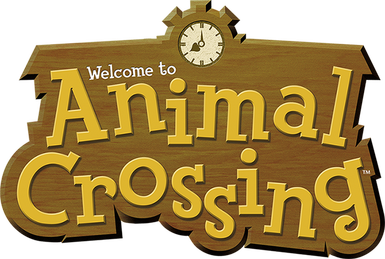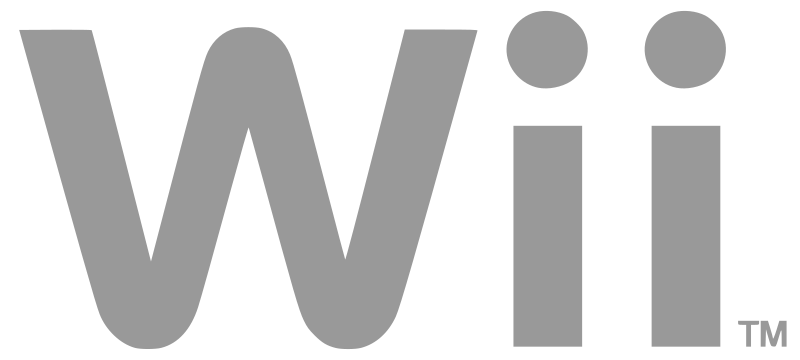What exactly was Nintendo's last big I.P.?
Ask anyone on IGN what Nintendo's last great I.P. was, and 9 out of 10 times you will hear the word "Pikmin". But is that really true? Was Nintendo's last great I.P. really released over a decade ago in 2001 as a launch-window title for the GameCube? I asked this question on my wall a few days ago, and got some interesting responses. One user responded (rather jokingly) with Wii Music. Another started throwing out a few small titles, but eventually admitted that he/she couldn't think of anything significant.
The following is a list of Nintendo franchises that were released in North America after Pikmin. Keep in mind that we bended the rules on some of these due to the fact that many of them weren't actually released in America until much later. So, as a general rule of thumb, the following franchises are ordered by their release dates Stateside.
1. Animal Crossing (2002)

It all started as a project for the Nintendo 64 that saw a release in April of 2001 in Japan. But the game was quickly ported to the GameCube in December of 2001, where it met quick success. North America didn't actually receive the game until late 2002, but that was because of the intense amount of translation that was needed for localization. The result: an almost completely different game that was so successful, it was retranslated and rereleased back in Japan a year later. With several sequels and more on the way, there is no doubt that Animal Crossing is now a huge franchise for Nintendo.
Games in the series:
Animal Forest (N64, 2001)
Animal Crossing (JP) (GCN, 2001)
Animal Crossing (Animal Crossing e+) (GCN, 2002) First game to reach NA
Animal Crossing: Wild World (NDS, 2005)
Animal Crossing: City Folk (Wii, 2008)
Animal Crossing 3DS (3DS, TBA)
2. Fire Emblem (2003)

I know what you're thinking. "What? Fire Emblem? That's cheating!" I admit, this game REALLY DOES bend the rules a lot, as the original Fire Emblem game actually came out on the NES in 1990 (don't worry, all of the other games on this list don't break the rules this much). But it's hard to believe that it took the series so long to reach America. But here we are. Fire Emblem came out on the GBA late in 2003, and Nintendo has continued to localize the strategy-RPG series ever since. May Fire Emblem continue to hold strong for years to come.
Games in the series:
Fire Emblem: Shadow Dragons and the Blade of Light (NES, 1990)
Fire Emblem Gaiden (NES, 1992)
Fire Emblem: Mystery of the Emblem (SNES, 1994) Enhanced remake of the original
Fire Emblem: Genealogy of Holy War (SNES, 1996)
Fire Emblem: Thracia 776 (SNES, 1999)
Fire Emblem: Sword of Seals (GBA, 2002)
Fire Emblem (GBA, 2003) First game to reach NA
Fire Emblem: The Sacred Stones (GBA, 2004)
Fire Emblem: Path of Radiance (GCN, 2005)
Fire Emblem: Radiant Dawn (Wii, 2007)
Fire Emblem: Shadow Dragon (NDS, 2008) Enhanced remake of the original
Fire Emblem: Hero of Light and Shadow (NDS, 2010) JP only
Fire Emblem 3DS (3DS, TBA)
3. Mario & Luigi (2003)

Sure, one could argue that the Mario & Luigi series is technically not a new franchise, but it was so different from any other Mario games (including existing Mario RPG franchises) that it might as well should be. First released on the Game Boy Advance in 2003, the series took off, seeing instant success worldwide and universally praised for its quirky personality, the game spawned two sequels, both on the DS. With the original GBA game being one of my favorite games of all time, if this franchise isn't big, I don't know what is.
Games in the series:
Mario & Luigi: Superstar Saga (GBA, 2003)
Mario & Luigi: Partners in Time (NDS, 2005)
Mario & Luigi: Bowser's Inside Story (NDS, 2009)
4. WarioWare (2003)

What exactly is a Wario game? I don't know either. But WarioWare is probably the most popular of all the Wario series. Again, WarioWare is technically not a new I.P., but the only similarity between this series and other Wario games is the fact that Wario is on it. Everything, including gameplay, style, and even Wario's personality, was completely changed to form this wonderful series. Since its first installment on the Game Boy Advance, the series has seen numerous sequels and remakes that make this game so appealing.
Games in the series:
WarioWare, Inc.: Mega Microgame$! (GBA, 2003)
WarioWare, Inc.: Mega Party Game$! (GCN, 2004) Enhanced remake of the original
WarioWare: Touched! (NDS, 2005)
WarioWare: Twisted! (GBA, 2005)
WarioWare: Smooth Moves (Wii, 2007)
WarioWare: Snapped! (DSiWare, 2009)
WarioWare: D.I.Y. (NDS/WiiWare, 2010)
5. Custom Robo (2004)

I was a bit hesitant on this choice. First of all, most people haven't even heard of this franchise. Second of all, it actually first saw a release in 1999. Third of all, I had to choose between Custom Robo and Chibi Robo (a great series, but unrelated to Custom Robo). Seeing the poor sales in Chibi Robo, I decided to go for Custom Robo. Now, what do I know about this game? Absolutely nothing, other than the fact that you battle giant robots until one of them runs out of health. Yup, that's Custom Robo for ya. And apparently, it was popular enough to spawn several sequels, so it must be pretty damn big for Nintendo.
Games in the series:
Custom Robo (N64, 1999)
Custom Robo V2 (N64, 2000)
Custom Robo GX (GBA, 2002)
Custom Robo (Custom Robo: Battle Revolution) (GCN, 2004) First game to reach NA
Custom Robo Arena (NDS, 2007)
6. Nintendogs (2005)

People love, people hate. Either way, the series worked wonders when it first came out on Nintendo's struggling DS handheld in 2005. The pet simulation game proved to the world that the DS' touchscreen could, in fact, revolutionize gaming. And boy did it sell like hotcakes. With so many copies sold, the original Nintendogs game became the third best-selling standalone game of all time. Now THAT is a big franchise.
Games in the series:
Nintendogs (all 3 versions) (NDS, 2005) Best selling DS game of all time
Nintendogs: Best Friends (NDS, 2005)
Nintendogs: Dalmatian & Friends (NDS, 2006)
Nintendogs + Cats (all 3 versions) (3DS, 2011) Launch title for the 3DS
7. Brain Age (2006)

Of all the Touch! Generations games out there, the most influential was probably the original Brain Age, a game that effectively brought the DS to people of all ages, from little 7-year-olds to people at age 100 and beyond. By combining both handwriting recognition and speech recognition, the original Brain Age provided an experience that truly could not be seen anywhere else. And how well did the game sell? The game exploded. Upon its international release, the original Brain Age became one of the best-selling DS games of all time.
Games in the series:
Brain Age: Train Your Brain in Minutes a Day! (NDS, 2006)
Brain Age 2: More Training in Minutes a Day! (NDS, 2007)
Brain Age Express (all 3 versions) (DSiWare, 2009)
8. Wii (2006)

A lot of people won't consider the Wii series an actual franchise. Those people are either people bent on proving that Nintendo's last franchise was Pikmin (I already gave 7 reasons why it is not) or just see the Wii series as just a bunch of unrelated games. But "Wii" is a franchise; in fact, it is the highest-selling franchise in history. I think the success of the Wii franchise should be quite obvious by now, so there really is no need for me to say anymore.
Games in the series:
Wii Sports (Wii, 2006) Best-selling video game of all time
Wii Play (Wii, 2006) Best-selling non-bundled video game of all time
Wii Fit (Wii, 2007)
Wii Chess (Wii, 2008) JP and EU only
Wii Music (Wii, 2008)
Wii Sports Resort (Wii, 2009)
Wii Fit Plus (Wii, 2009)
Wii Party (Wii, 2010)
Wii Play: Motion (Wii, 2011)
9. Starfy (2009)

When Nintendo finally decided to localize their "Densetsu no Stafy" franchise for the first time since its conception 7 years prior, fans cheered. Titled "The Legendary Starfy," the first game that made it America was actually the fifth game in the franchise. Unfortunately, while both North Americans and Australians had the chance to experience the franchise first-hand, the series has yet to come to Europe.
Games in the series:
The Legend of Starfy (GBA, 2002)
The Legend of Starfy 2 (GBA, 2003)
The Legend of Starfy 3 (GBA, 2004)
The Legend of Starfy 4 (NDS, 2006)
The Legendary Starfy (NDS, 2009) First game to reach NA
10. Rhythm Heaven (2009)

Here we have the last franchise in our list of 10 franchises that took off after Pikmin. And of all the franchises we picked earlier, perhaps this one is the least appreciated. First released as a Japan-only title on the Game Boy Advance in 2006. Though the hype for the original GBA title was virtually nonexistent, the game sold well enough to demand a sequel. The sequel, Rhythm Tengoku Gold, was released in the West on the Nintendo DS as simply Rhythm Heaven. And, well... the rest is history.
Games in the series:
Rhythm Tengoku (GBA, 2006)
Rhythm Heaven (NDS, 2009) First game to reach NA
Rhythm Heaven Fever (Wii, 2012)
Well, there you have it. 10 significant Nintendo franchises that took off after Pikmin. So next time you have a friend who claims that Nintendo's last new I.P. was Pikmin, shake your index finger at him and tell him that he is wrong. And then give him 10 reasons why he is wrong. And the best part? You will be right.
So, MyIGNers, I must ask, which one of these franchises is your favorite?
Author's Note: Although this list contains many of Nintendo's most recent franchises, other smaller franchises like Chibi-Robo and Big Brain Academy were not listed in order to limit the list to just 10.
![Amazing Spider-Man Finale Features New [SPOILER] Costume](../../../../../../assets1.ignimgs.com/2018/06/01/untitled-br-1527892808294_small.jpg)